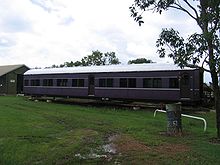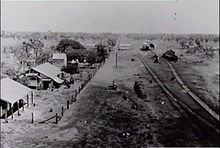Northern Australian Railways
| Northern Australian Railways | |||||||||||||||||||||||||||||||||||||||||||||||||||||||||||||||||||||||||||||||||||||||||||||||||||||||||||||||||||||||||||||||||||||||||||||||||||||||||||||||||||||||||||||||||||||||||||||||||||||||||||||||||||||||||||||||||||||||||||||||||||||||||||||||||
|---|---|---|---|---|---|---|---|---|---|---|---|---|---|---|---|---|---|---|---|---|---|---|---|---|---|---|---|---|---|---|---|---|---|---|---|---|---|---|---|---|---|---|---|---|---|---|---|---|---|---|---|---|---|---|---|---|---|---|---|---|---|---|---|---|---|---|---|---|---|---|---|---|---|---|---|---|---|---|---|---|---|---|---|---|---|---|---|---|---|---|---|---|---|---|---|---|---|---|---|---|---|---|---|---|---|---|---|---|---|---|---|---|---|---|---|---|---|---|---|---|---|---|---|---|---|---|---|---|---|---|---|---|---|---|---|---|---|---|---|---|---|---|---|---|---|---|---|---|---|---|---|---|---|---|---|---|---|---|---|---|---|---|---|---|---|---|---|---|---|---|---|---|---|---|---|---|---|---|---|---|---|---|---|---|---|---|---|---|---|---|---|---|---|---|---|---|---|---|---|---|---|---|---|---|---|---|---|---|---|---|---|---|---|---|---|---|---|---|---|---|---|---|---|---|---|---|---|---|---|---|---|---|---|---|---|---|---|---|---|---|---|---|---|---|---|---|---|---|---|---|---|---|---|---|---|---|---|
|
Adelaide River reception building
| |||||||||||||||||||||||||||||||||||||||||||||||||||||||||||||||||||||||||||||||||||||||||||||||||||||||||||||||||||||||||||||||||||||||||||||||||||||||||||||||||||||||||||||||||||||||||||||||||||||||||||||||||||||||||||||||||||||||||||||||||||||||||||||||||
| Route length: | 509 km | ||||||||||||||||||||||||||||||||||||||||||||||||||||||||||||||||||||||||||||||||||||||||||||||||||||||||||||||||||||||||||||||||||||||||||||||||||||||||||||||||||||||||||||||||||||||||||||||||||||||||||||||||||||||||||||||||||||||||||||||||||||||||||||||||
| Gauge : | 1067 mm ( cape track ) | ||||||||||||||||||||||||||||||||||||||||||||||||||||||||||||||||||||||||||||||||||||||||||||||||||||||||||||||||||||||||||||||||||||||||||||||||||||||||||||||||||||||||||||||||||||||||||||||||||||||||||||||||||||||||||||||||||||||||||||||||||||||||||||||||
|
|||||||||||||||||||||||||||||||||||||||||||||||||||||||||||||||||||||||||||||||||||||||||||||||||||||||||||||||||||||||||||||||||||||||||||||||||||||||||||||||||||||||||||||||||||||||||||||||||||||||||||||||||||||||||||||||||||||||||||||||||||||||||||||||||
The North Australian Railway (North Australia Railway [NAR]), until 1911 Palmerston and Pine Creek Railway (P&PC Rly.) And between 1911 and 1926 Northern Territory Railway (NTR) was a rail connection, which - starting from Darwin - in successive steps after Advanced south and eventually reached Birdum . It operated from 1887 to 1976.
Construction of the route
In 1883, the construction of the line in Kapspur began . The client was the South Australian Railway . The area of today's Northern Territory was then part of South Australia . The contractor was the company Charles and Edwin Millar from Melbourne . The work was carried out by almost 3,000 " coolies " from China and India . On June 1, 1888, the section to Adelaide River , a relay station of the Trans-Australian Telegraph Line , was opened after the river of the same name had been spanned with a large steel bridge, four months later the entire route to Pine Creek .
The long-term goal at the time was not only to open up the Darwin hinterland, but also to create a Central Australian Railway with a connection to the South Australian railway network. When the Northern Territory came under the jurisdiction of the Australian Confederation in 1908, this also became the owner of the railway from 1911. It was now under the administration of the Northern Territory and was renamed the Northern Territory Railway . Both in the South Australian Northern Territory Surrender Act of 1908 and in the Northern Territory Acceptance Act of 1910, the construction of the line was anchored in law. Work began in 1914, and in 1917 the line to the temporary Emungalan station on the north bank of the Katherine River was completed, while the city center of Katherine is on the south bank. In 1918 the railway came under the jurisdiction of the Commonwealth Railways . With the Northern Territory Railway Extension Act passed in 1923, it was decided to continue building to Daly Waters . The bridge over the Kathrine River was not built until 1926. Since 1926 the railway was called North Australia Railway (NAR). Two more construction phases followed: Mataranka was reached in 1928, Birdum in 1929 . The project got stuck there - as it turned out: for good - Daly Waters was never reached. This narrow-gauge railway never managed to close the gap to South Australia .
On the one hand, this was due to the relatively low economic volume of the area, the small population and the relatively long distances that had to be bridged. On the other hand, it was due to the global economic crisis and a lack of financial resources. While the attempt at a north-south crossing of the continent with a railway for the southern route, the Great Northern Railway , led to a town, Alice Springs , the northern route ended in Birdum in no man's land between Mataranka and Daly Waters . Proposals to continue building the route to Camooweal instead were rejected by the government - also with reference to the cash situation.
business
Until World War II
The operation of the Palmerston & Pine Creek Railway initially provided for a daily pair of trains. This was later temporarily reduced to three pairs of trains per week. There was a break in the Adelaide River journey in each direction to give passengers the opportunity to have lunch in the station restaurant there. In the second chapter of her work We of the Never Never, Jeannie Gunn describes a journey by train in 1902: The journey from Darwin to Pine Creek takes a whole day in a GmP , the last car of which is the only passenger carriage on the train. Regarding the journey, she remarks: […] extracting a maximum of pleasure from a minimum rate of speed […] ( extracting the greatest possible pleasure from the lowest possible speed).
Second World War
During World War II , the railroad was of some strategic importance as it was the main mode of transport in the Darwin hinterland, which, along with neighboring military targets , was attacked by Japan . Since an invasion by the Japanese was to be feared, numerous military supply and replenishment facilities, as well as hospitals, were built along the railway . The train frequency multiplied by up to 147 trains a week at peak times. The Australian Army took control of operations on the railway line and began expanding them to cope with the exorbitantly increased load.
post war period
After the Second World War it became clear that the location of the terminus at Birdum was logistically unsustainable. Birdum was west of Birdum Creek . Both the Stuart Highway and the telegraph line ran on the east bank of the river. Crossing it by means of a ford was a problem, especially during the rainy season , that could be tolerated as a temporary solution, but was no longer acceptable with increased traffic and increased demands on reliability. A place eight kilometers north of Birdum was much cheaper: Here the railroad touched the Stuart Highway and the telegraph line again before changing two kilometers south over a bridge to the west side of the river. At this point a military loading line was initially built . The new transfer point was named Larrimah , which means the Yangman meeting point in the now extinct language of the indigenous people . In the period that followed, all functions of the traffic transshipment point were gradually shifted from Birdum to Larrimah, as were the residential quarters and the operational facilities of the railway. Larrimah thus effectively - if not officially - became the new terminus of the railway. Birdum was only approached for the water requirements of the steam locomotives . After this the mid-1950s by Sulzer - diesel locomotives has been replaced, this accounted for. The last train to Birdum ran in 1956. However, the section was not officially closed.
With increasing motorization and the expansion of the parallel Stuart Highway, the railway grew in strong competition. The Clapp Report , presented in March 1945 and named after the former director of the railways of Victoria , Harold Winthrop Clapp, proposed an extension of the line to Dajarra in Queensland . This, as well as a contract signed in 1946 between the Australian federal government and the states of New South Wales , South Australia and Victoria for the extension of the line between Alice Springs and Birdum, were not carried out. Both projects also envisaged a conversion of the Northern Australian Railway to standard gauge .
Since 1958 the passenger train has only run once a week. However, the route was still of considerable importance for the removal of iron ore from the pits near Frances Creek (also: Francis Creek). When steel prices fell in the 1970s, mining and, after a major accident, the railway in 1976, its operations were also stopped. The line was officially closed in 1986.
Aftertaste
New standard gauge railway
The Central Australian Railroad was only completed in 2004 - now in standard gauge - 28 years after the narrow-gauge Northern Australian Railroad had ceased operations . Partly the new Central Australian Railway north of Katherine uses the old route, in other places it is followed by a high-voltage line . The historical route of the North Australian Railway can often be clearly seen in the terrain.
Museum activities
The reception building of the North Australian Railway will no longer be used by the Central Australian Railway. Those in Adelaide River, Pine Creek and Katherine have been preserved and used as museums. Some of the parked vehicles from the former Northern Australian Railroad are also on display there.
The Friends of the North Australia Railway , founded in 2001 , has held an annual meeting in Birdum since 2004, during which efforts are made to expose the remains of the railway systems and to preserve them for posterity.
The inclusion of all remaining remnants of the railway line from Darwin to Birdum in the monument protection list has been examined since 2006.
swell
literature
- William A. Bayley: The Closure of the North Australia Railway . In: Australian Railway Historical Society Bulletin, June 1977, pp. 121-127.
- Basil Fuller: The Ghan - The Story of the Alice Springs Railway . Sydney 1975. ND 2003. ISBN 978-1-74110-806-4 .
- JL Harvey: The North Australia Railway, 1911-1939 . In: Australian Railway Historical Society Bulletin, August u. November 1970, pp. 169-192, 241-259, February, March, April, 1971, pp. 39-47, 58-65, 73-88.
- James Young Harvey: The never-never line: the story of the North Australia Railway. Melbourne 1987. ISBN 0-947062-20-3 .
- Jim Powe: Trains and Railways of Australia . 2nd edition, Sydney 2009. ISBN 978-1-74110-902-3
- Ian R. Stevenson: The line that led to nowhere: the story of the North Australia railway. Adelaide 1979. ISBN 0-7270-1029-8 .
- Helen Wilson, Penny Cook, David Carment: Early Days in Adelaide River . Ed .: National Trust. 1988.
Other sources
Visit of the museums mentioned and evaluation of the information given there.
Web links
- Friends of the North Australia Railway
- Detailed route information on the Northern Australian Railways at comrails.com
Individual evidence
- ↑ Palmerston was Darwin's name until 1911, not to be confused with Palmerston , founded in 1981 , 20 km from Darwin.
- ↑ available online here , PDF file, 44kb
- ↑ available online here , PDF file, 46kb
- ^ Only different : Basil Fuller, p. 222.
- ↑ Plan drawing of the route between Mataranka and Daly Waters on the website of the Northern Territory Land Information System, jpg file, 1.6mb.
- ↑ Money unavailable. The Brisbane Courier , September 5, 1930
- ^ Jeannie Gunn (alias: Mrs. Aeneas Gunn): We of the Never Never . Hutchinson: Hawthorn 1987, p. 9.
- ^ The Overland Telegraph Port Darwin to Port Augusta.
- ^ Report of the Committee of Inquiry into Defense and Defense Related Awards (CIDA), March 1994. Available online on the Australian Department of Defense website here , PDF file, 0.6mb.
- ↑ Entry on Larrimah at planbooktravel.com.au
- ↑ The Statistical Yearbook of Australia, year 1975-76, shows on p. 381 an unchanged length of the national railways in the Northern Territory since at least 1941. On p. 382 the route is given again as from Darwin to Birdum . Available online here , PDF file, 2.9mb.
- ↑ More detailed in: Statistical Yearbook of Australia, year 1946–1947. Available online here , PDF file, 5.1mb.
- ↑ Powe, p. 272.
- ↑ Announcement from the Australian Association of Tourist Railways from 2006 ( Memento of the original from October 25, 2009 in the Internet Archive ) Info: The archive link was inserted automatically and has not yet been checked. Please check the original and archive link according to the instructions and then remove this notice. .
- ↑ Territory Iron Limited, Frances Creek Project, Assessment Report 57, November 2006. Available online here ( Memento of the original from October 7, 2009 in the Internet Archive ) Info: The archive link was automatically inserted and not yet checked. Please check the original and archive link according to the instructions and then remove this notice. , PDF file, 0.3mb.
More pictures
1-C locomotive from Beyer-Peacock


















